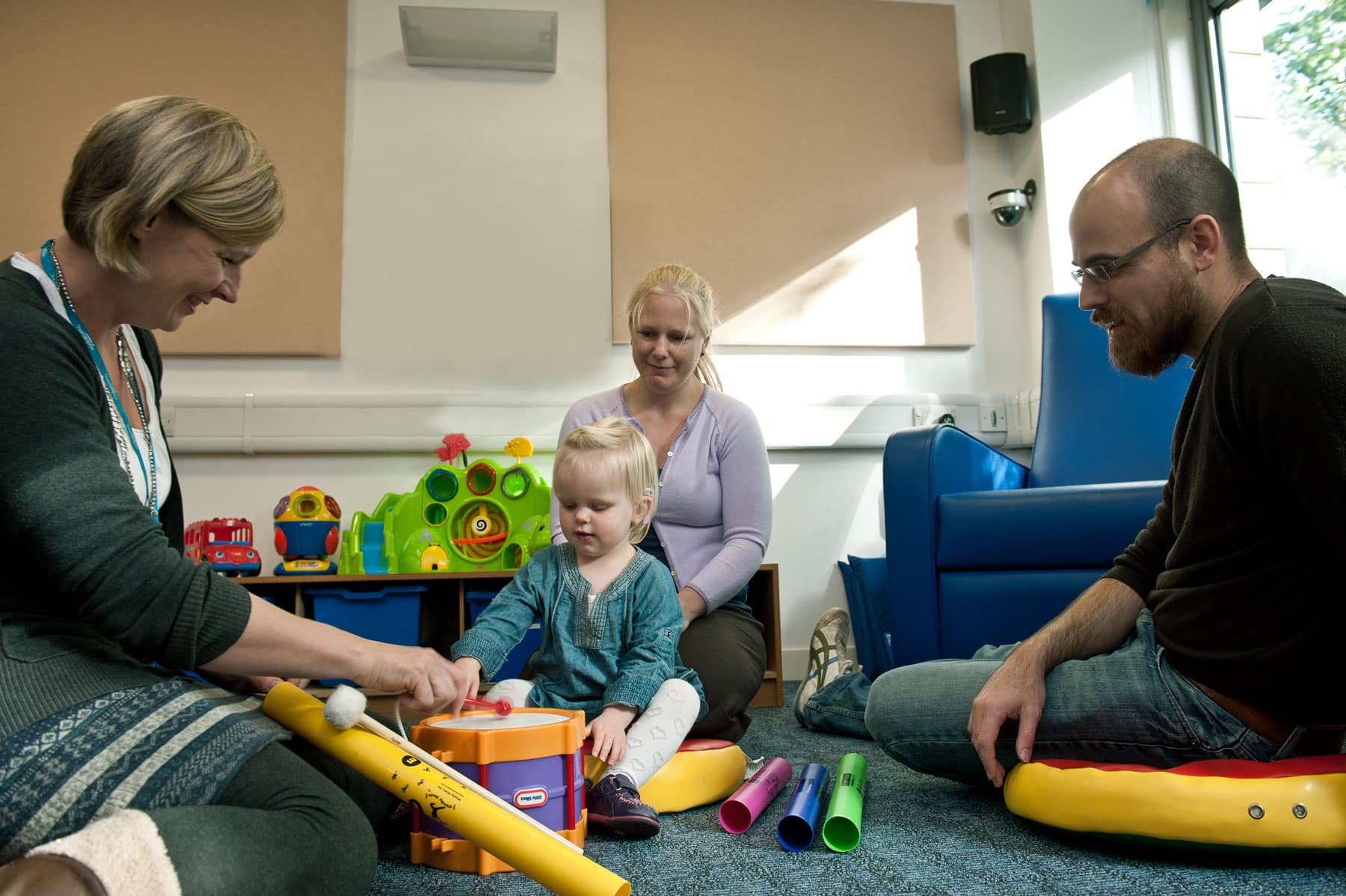MED-EL
Published Jan 30, 2015
Build Your Child’s Listening Skills with Musical Sounds

If your child has just received a cochlear implant it’s important that you give them as many opportunities as possible to hear a variety of sounds. By helping your child to hear and engage with sounds you’ll build their listening skills, and ultimately their language skills. Here are some ways you can start.
Start Early, Start with Lullabies
You can build the groundwork for developing your child’s listening skills even before they begin to speak.
It’s best to start with the very basics. Singing lullabies, while cuddling and rocking rhythmically with your child, will make him or her familiar with your voice and the rhythm of their language. Even as your child grows older don’t stop singing, just expand your repertoire and use more challenging words and tunes.
Here are some of the age-appropriate songs that you can sing:
- For infants, lullabies
- For preschoolers, songs like “Eensy Weensy Spider”, “Row Row Row Your Boat”, or “Humpty Dumpty”
- For school-aged children, nursery rhymes, hand clapping games, or songs from popular childrens’ movies
Child-Directed Speech: It’s like Music
You don’t even need to sing to help your child learn the basics of language. When you’re talking with him or her, just use child-directed speech. In many ways child-directed speech resembles music and is different from normal speech.
Child-directed speech:
- is clear and repetitive
- typically has a higher pitch
- is melodious and with varied intonation
- has a slow tempo
- uses a sing-song rhythm
With child-directed speech you can talk to your child and share important information, in a way that also helps him or her to better hear the important parts of grammar in speech: word endings and the “s” sound in plural words, the stresses on key words, and important pauses like those where a comma would be in written speech. Talking with lively facial expressions, and using meaningful gestures and touches, can enhance this information even more.
Listening and Recognizing Sounds
You can talk at your child all you want but it won’t do any good if your child isn’t listening. Listening is the first step to understanding.
Helping your child to listen and recognize soundsan be done with positive encouragement. A good way to do this is by playing listening games with them; I wrote another article with 5 listening games that you can play with your child and here’s the first one, going for a “listening walk” inside your house:
- Walk around your house and look for appliances that make sounds, like the microwave, refrigerator, vacuum cleaner, washing machine, or a flushing toilet.
- Then, walk around the house with your child. When you’re near an object that you’ve picked, stop and say “listen!” to prepare your child for the sound.
- Now turn the object on so that it makes a noise.
- Show your child that you are listening by pointing to your ear, and then smile and nod. You can also say “I hear that!” and use your voice to copy the sound.
- Tell your child about the sound that you’ve heard by saying something like “I can hear the microwave! That’s the microwave making that humming sound.”
- Once you’ve had some fun with this sound, then go on to the next one.
Encourage your child to do more than just listen to the sounds, encourage them to imitate the sounds. Once you’ve both heard a sound, like a dog’s bark, then use your own voice to imitate the sound. If you look at your child expectantly and keep quiet he or she might try to imitate the dog’s bark as well.
Don’t worry about asking your child over and over if he or she has learned to recognize a specific sound. Instead, just focus on giving your child relevant experiences and listening activities that are as fun as possible. The more engaged he or she is the more likely he or she is to remember.
Introducing Music
Once you’ve introduced your child to musical speech and sounds, then you might want to move on to using music. In ways similar to the listening game above, you can also help your child to recognize when sounds start and stop with musical games like Musical Chairs or Hot Potato.
Here’s one game that you can play with your child when you’re alone:
- Prepare some music and sit down quietly next to the speakers you’ll use
- Let your child recognize that there’s no sound playing
- Press “play”
- Listen to the music and move around, swaying back and forth or bouncing up and down to the beat, to show that you hear the music. You might say to your child, “I can hear the music playing. This is a lovely song.”
- Press “pause”
- Stop moving around to show your child that there’s no more music. Tell your child “The music has stopped! I can’t hear it anymore.”
- Then do it again until your child recognizes that you’ve started playing music and moves around with you
Your child will learn fastest in an environment that’s quiet, where the music is clearly contrasted with silence. At first some children might not recognize that the song has stopped. That’s okay. Just keep practicing, and bring in other friends or family members to act as a good model by moving with the music.
MED-EL
Was this article helpful?
Thanks for your feedback.
Sign up for newsletter below for more.
Thanks for your feedback.
Please leave your message below.
Thanks for your message. We will reply as soon as possible.
Send us a message
Field is required
John Doe
Field is required
name@mail.com
Field is required
What do you think?
MED-EL


